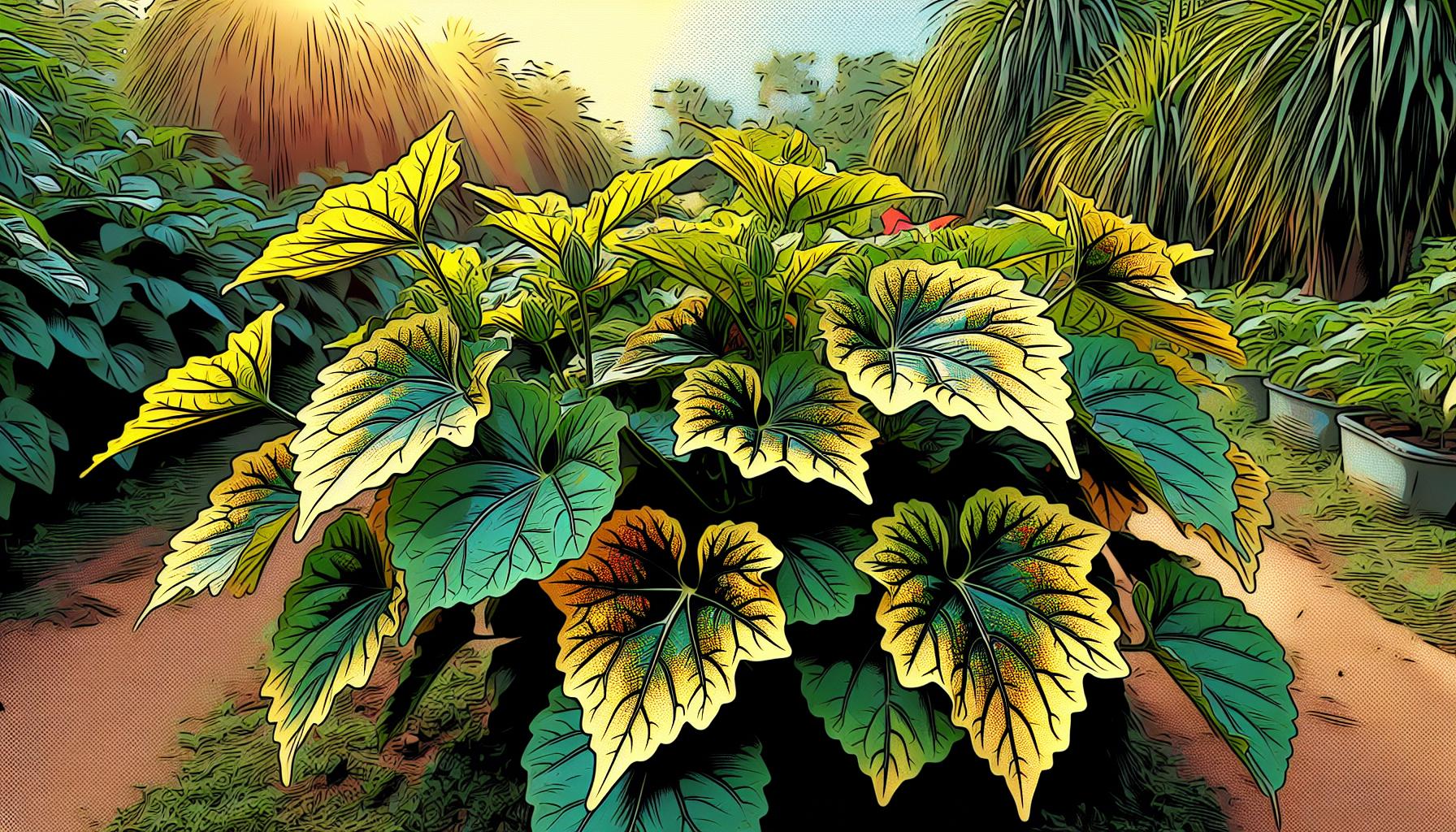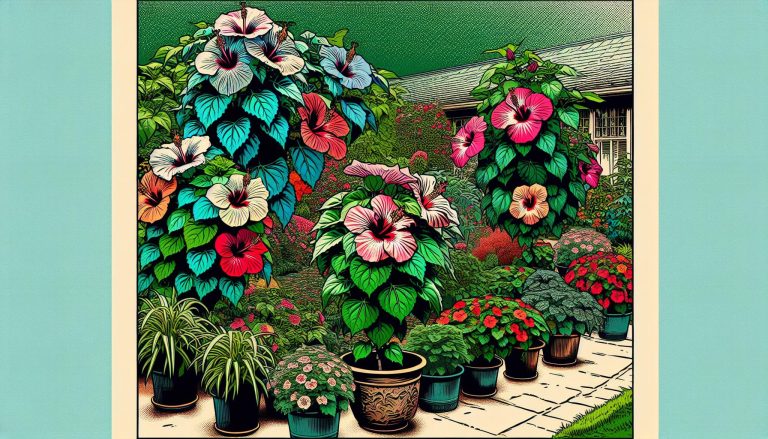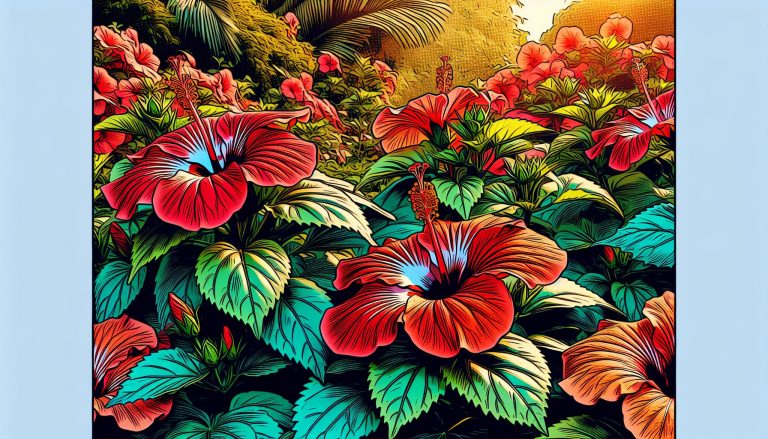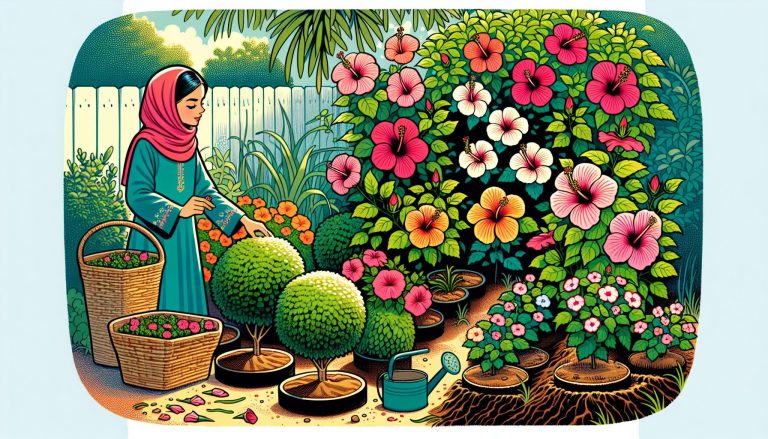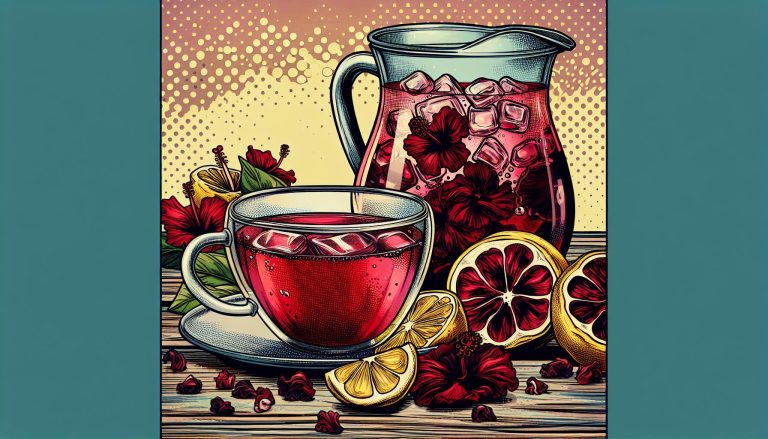Why Are My Hibiscus Leaves Turning Yellow? 7 Common Causes and Solutions
As a passionate gardener, I’ve encountered my fair share of plant problems. One common issue that often leaves hibiscus owners puzzled is yellowing leaves. It’s a sight that can send any plant lover into a panic, wondering if their beloved hibiscus is on its last legs.
But don’t fret! Yellowing leaves on your hibiscus plant don’t always spell doom. In fact, it’s often a sign that your plant is trying to communicate something important. From nutrient deficiencies to watering issues, there are several reasons why your hibiscus might be sporting yellow foliage. In this article, I’ll guide you through the potential causes and solutions to help your hibiscus regain its lush, green glory.
Understanding Hibiscus Leaf Yellowing
Hibiscus leaf yellowing, known as chlorosis, is a common issue that affects these vibrant plants. It’s characterized by the leaves losing their lush green color and turning yellow, often starting from the veins and spreading outward. This discoloration is a visible sign of stress or deficiency in the plant’s system.
Several factors contribute to hibiscus leaf yellowing:
- Nutrient deficiencies: Lack of essential nutrients like nitrogen, iron, or magnesium
- Improper watering: Over-watering or under-watering the plant
- Soil pH imbalance: Incorrect soil acidity or alkalinity
- Pest infestations: Attacks from insects like spider mites or aphids
- Disease: Fungal or bacterial infections affecting the plant’s health
- Environmental stress: Sudden changes in temperature or light exposure
Identifying the specific cause of yellowing is crucial for effective treatment. Each factor requires a different approach to restore the hibiscus’s health. For example, nutrient deficiencies are often resolved through targeted fertilization, while pest infestations may require organic or chemical pesticides.
It’s important to note that some degree of leaf yellowing is natural, especially in older leaves. However, excessive or rapid yellowing across multiple leaves indicates an underlying issue that needs attention. By understanding the various causes of hibiscus leaf yellowing, you’ll be better equipped to diagnose and address the problem, ensuring your hibiscus plants maintain their vibrant, healthy appearance.
Common Causes of Yellow Hibiscus Leaves
Yellow hibiscus leaves often result from specific environmental factors or plant care issues. I’ll explore the most common causes of this problem and provide insights into each.
Nutrient Deficiencies
Nutrient deficiencies are a primary cause of yellowing hibiscus leaves. Iron chlorosis, characterized by yellowing leaves with green veins, is particularly common in hibiscus plants. Magnesium deficiency causes yellowing between leaf veins, starting from the older leaves. Nitrogen deficiency leads to overall yellowing, beginning with the older leaves at the bottom of the plant. To address these issues, I recommend using a balanced fertilizer specifically formulated for hibiscus or conducting a soil test to determine which nutrients are lacking.
Improper Watering
Overwatering and underwatering both cause yellow leaves in hibiscus plants. Overwatering leads to root rot, preventing the plant from absorbing nutrients effectively. This results in yellowing leaves that may drop prematurely. Underwatering causes stress to the plant, leading to leaf yellowing and wilting. To avoid these issues, I ensure the soil is moist but not waterlogged. I water deeply when the top inch of soil feels dry, and I use well-draining soil to prevent water retention.
Pest Infestations
Pests such as spider mites, whiteflies, and aphids can cause hibiscus leaves to turn yellow. These insects feed on the plant’s sap, depriving it of essential nutrients and causing stress. Spider mites create tiny yellow spots on leaves, while whiteflies and aphids cause yellowing and distortion of new growth. To combat pest infestations, I regularly inspect my hibiscus plants, use insecticidal soap or neem oil for treatment, and introduce natural predators like ladybugs to keep pest populations in check.
Environmental Factors Affecting Hibiscus Health
Environmental factors play a crucial role in the health of hibiscus plants, often contributing to yellowing leaves. Understanding these factors helps in maintaining optimal growing conditions for vibrant, healthy hibiscus.
Light Exposure Issues
Hibiscus plants thrive in full sun but can suffer from improper light exposure. Insufficient light leads to weak growth and yellowing leaves, while excessive direct sunlight causes leaf scorching. I recommend placing hibiscus in a location with 6-8 hours of direct sunlight daily, preferably morning sun and afternoon shade in hotter climates. For indoor hibiscus, position them near a south-facing window, using sheer curtains to filter intense light if needed.
Temperature Stress
Hibiscus plants are sensitive to temperature fluctuations, with ideal ranges between 60°F and 90°F (15°C to 32°C). Cold temperatures below 50°F (10°C) can cause leaf yellowing and drop, while extreme heat above 95°F (35°C) stresses the plant, leading to yellowing and wilting. I suggest protecting outdoor hibiscus from frost and providing shade during heatwaves. For indoor plants, maintain consistent temperatures and avoid placing them near drafty windows or heating vents.
Disease-Related Yellowing in Hibiscus Plants
Common Diseases Affecting Hibiscus
Hibiscus plants are susceptible to several diseases that cause leaf yellowing:
- Fungal infections: Root rot, leaf spot, and powdery mildew
- Viral diseases: Hibiscus chlorotic ringspot virus (HCRSV)
- Bacterial infections: Pseudomonas cichorii and Xanthomonas campestris
Each disease presents unique symptoms and requires specific treatment approaches.
Identifying Disease Symptoms
Recognizing disease-related yellowing in hibiscus plants involves observing these signs:
- Fungal infections: Yellow leaves with brown spots or patches
- Viral diseases: Yellow rings or patterns on leaves
- Bacterial infections: Yellow halos around leaf spots or lesions
Regular inspection of leaves, stems, and roots helps in early disease detection and prevention.
Treatment and Prevention Strategies
Effective management of disease-related yellowing in hibiscus plants includes:
- Pruning infected parts
- Applying appropriate fungicides or bactericides
- Improving air circulation around plants
- Avoiding overhead watering
- Maintaining proper plant spacing
Implementing these strategies helps prevent disease spread and promotes healthy plant growth.
Soil and Fertilization Problems
Soil quality and proper fertilization are crucial for healthy hibiscus plants. Poor soil conditions and improper fertilization often lead to yellowing leaves.
Soil pH Imbalance
Hibiscus plants thrive in slightly acidic soil with a pH range of 6.0 to 6.5. When soil pH is outside this range, nutrient uptake is impaired, causing yellowing leaves.
- Test soil pH using a home testing kit or professional lab analysis
- Adjust pH by adding lime to raise it or sulfur to lower it
- Retest soil after adjustments to ensure optimal pH levels
Nutrient Deficiencies
Yellowing leaves often indicate specific nutrient deficiencies in hibiscus plants:
| Nutrient | Deficiency Symptoms | Solution |
|---|---|---|
| Iron | Yellowing between leaf veins | Apply iron chelate or iron sulfate |
| Magnesium | Yellowing from leaf edges inward | Use Epsom salt or dolomitic lime |
| Nitrogen | Overall yellowing, starting with older leaves | Apply balanced, nitrogen-rich fertilizer |
Improper Fertilization
Over-fertilization or using the wrong type of fertilizer can damage hibiscus roots and cause yellowing leaves.
- Use a balanced, slow-release fertilizer formulated for hibiscus
- Apply fertilizer according to package instructions, typically every 2-3 months
- Avoid fertilizing during dormant periods or times of stress
Poor Soil Drainage
Poorly draining soil leads to waterlogged roots, causing nutrient deficiencies and yellowing leaves.
- Improve soil drainage by adding organic matter like compost or perlite
- Ensure containers have adequate drainage holes
- Consider raised beds for outdoor hibiscus in areas with poor drainage
Soil Compaction
Compacted soil restricts root growth and nutrient uptake, resulting in yellowing leaves.
- Aerate soil around hibiscus plants annually
- Add organic matter to improve soil structure
- Avoid walking on soil near hibiscus roots
By addressing these soil and fertilization issues, I can help prevent yellowing leaves and promote healthy growth in hibiscus plants.
Prevention and Treatment Strategies
Preventing and treating yellowing leaves in hibiscus plants requires a multi-faceted approach. I’ll outline effective strategies to maintain healthy hibiscus plants and address specific issues causing leaf discoloration.
Proper Care Techniques
To prevent yellowing leaves, I focus on these essential care techniques:
- Watering: I water deeply but infrequently, allowing the top inch of soil to dry between waterings.
- Sunlight: I position hibiscus plants in areas with 6-8 hours of direct sunlight daily.
- Soil: I use well-draining, slightly acidic soil (pH 6.0-6.5) enriched with organic matter.
- Fertilization: I apply a balanced, slow-release fertilizer monthly during the growing season.
- Pruning: I regularly remove dead or diseased branches to promote air circulation.
- Temperature: I maintain temperatures between 60°F and 90°F, protecting plants from extreme cold or heat.
- Humidity: I mist leaves or use a pebble tray to increase humidity for indoor plants.
- Pest control: I inspect plants weekly for signs of pests and treat promptly with insecticidal soap or neem oil.
Addressing Specific Issues
When yellowing occurs, I take these targeted actions:
- Nutrient deficiencies:
- Iron: I apply iron chelate or iron sulfate to the soil.
- Magnesium: I sprinkle Epsom salt around the plant’s base.
- Nitrogen: I use a high-nitrogen fertilizer or add compost to the soil.
- Overwatering:
- I improve drainage by adding perlite or sand to the soil.
- I reduce watering frequency and ensure proper pot drainage.
- Underwatering:
- I increase watering frequency and mulch around the plant to retain moisture.
- Pest infestations:
- I use insecticidal soap or neem oil for minor infestations.
- For severe cases, I apply systemic insecticides as directed.
- Diseases:
- Fungal: I apply a copper-based fungicide and remove affected leaves.
- Viral: I remove and destroy infected plants to prevent spread.
- Bacterial: I prune affected areas and apply a bactericide.
- Soil pH imbalance:
- I test soil pH and adjust using sulfur to lower pH or lime to raise it.
- Environmental stress:
- I provide shade during extreme heat and bring plants indoors during frost.
- I use grow lights for indoor plants with insufficient natural light.
By implementing these prevention and treatment strategies, I maintain healthy hibiscus plants with vibrant, green foliage.
Conclusion
Yellowing hibiscus leaves can be a sign of various issues but don’t panic. By understanding the potential causes and implementing proper care techniques you can restore your plant’s health. Remember to assess factors like watering habits soil quality nutrient levels and environmental conditions. With the right approach and a bit of patience you’ll soon see your hibiscus thriving with lush green foliage. Stay vigilant monitor your plant regularly and adjust your care routine as needed. Your efforts will be rewarded with beautiful vibrant blooms that make hibiscus such a beloved garden favorite.

